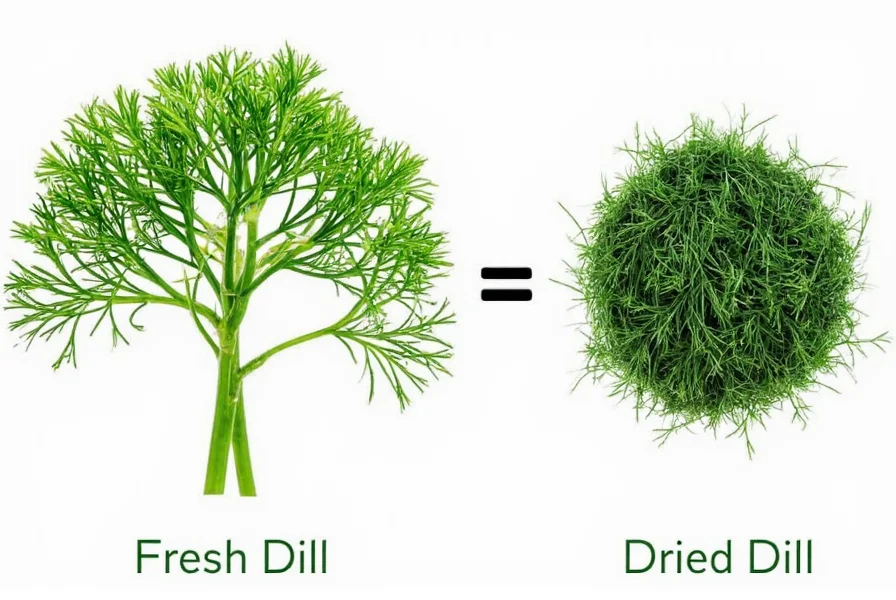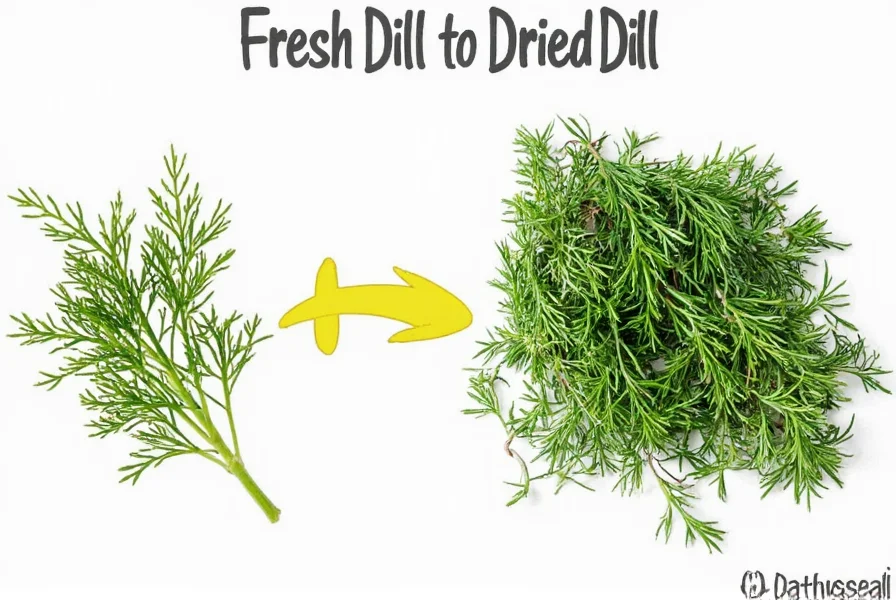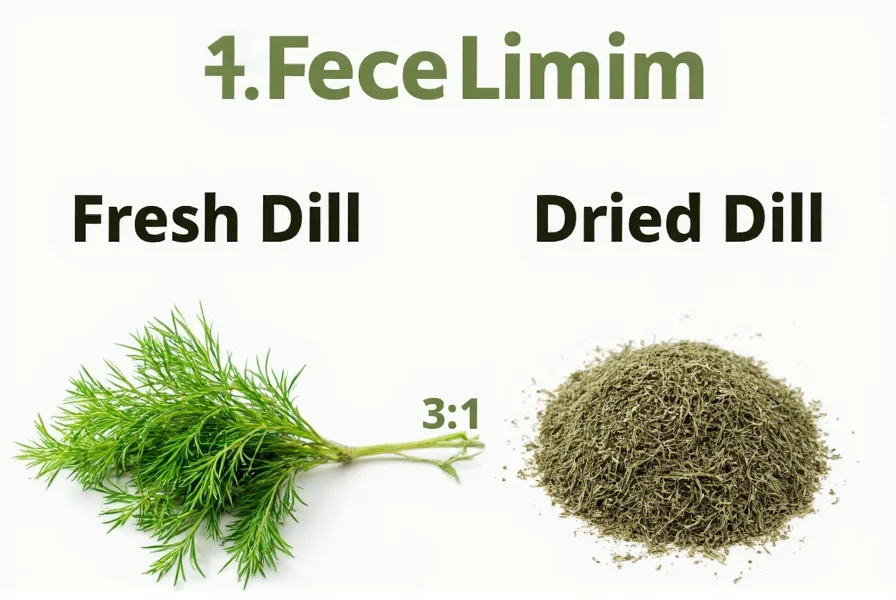The standard conversion ratio is 3:1 - meaning 3 parts fresh dill equals 1 part dried dill. Specifically, 1 tablespoon of fresh dill equals 1 teaspoon of dried dill, and 1 cup of fresh dill equals 1/3 cup of dried dill. This ratio accounts for the concentration difference between fresh and dried herbs.
When following recipes, understanding herb conversions is essential for achieving the intended flavor profile. The 3:1 fresh-to-dried ratio for dill isn't arbitrary—it reflects the fundamental difference in moisture content and flavor concentration between the two forms of this popular herb.
Why the 3:1 Fresh Dill to Dried Dill Conversion Ratio?
Fresh dill contains approximately 85-90% water, while dried dill has had most of this moisture removed through the drying process. This dehydration concentrates the essential oils and flavor compounds, making dried dill significantly more potent than its fresh counterpart.
When you're substituting dried dill for fresh in recipes, using equal amounts would result in an overpowering, potentially bitter flavor. Conversely, using too little dried dill when substituting for fresh would leave your dish lacking that distinctive dill flavor.
Practical Fresh Dill to Dried Dill Conversion Chart
| Measurement | Fresh Dill | Dried Dill |
|---|---|---|
| Teaspoon | 3 tsp | 1 tsp |
| Tablespoon | 1 tbsp | 1 tsp |
| Cup | 1 cup | 1/3 cup |
| Handful | 1 handful | 1/3 handful |
Adjusting the Dill Conversion Ratio for Best Results
While the 3:1 ratio serves as an excellent starting point for fresh dill to dried dill conversion, several factors may warrant slight adjustments:
- Recipe type: For delicate dishes like fish or egg salads, consider using slightly less dried dill (try a 3.5:1 ratio)
- Dill variety: Different dill cultivars have varying flavor intensities
- Drying method: Sun-dried dill may be more potent than oven-dried
- Storage time: Older dried dill loses potency over time
When substituting dried dill for fresh in recipes, always add the dried herb early in the cooking process to allow time for rehydration and flavor development. For fresh-to-dried substitutions in cold dishes like salads or dips, consider steeping the dried dill in a small amount of warm water or vinegar for 10-15 minutes before adding to achieve better flavor distribution.

Common Mistakes When Converting Fresh and Dried Dill
Many home cooks make these critical errors when substituting dried dill for fresh:
- Using equal measurements (1:1 ratio) resulting in overpowering flavor
- Adding dried dill too late in the cooking process
- Not accounting for the age of dried herbs (older = less potent)
- Using dill seed instead of dill weed (different flavor profile)
Remember that dried dill typically maintains its potency for 6-12 months when stored properly in an airtight container away from light and heat. After this period, you may need to increase the amount slightly to achieve the same flavor intensity.
When to Adjust Your Dill Conversion Approach
Certain cooking scenarios require special consideration for your dill measurement conversion:
- Pickling recipes: Use fresh dill heads rather than conversion—dried dill doesn't provide the same texture or visual appeal
- Long-simmering dishes: Reduce dried dill by 25% as flavors concentrate during cooking
- Raw applications: For salads and dips, use slightly less dried dill (try 3.5:1 ratio)
- Commercial dried blends: May contain fillers—use 25% more than standard conversion
Understanding these nuances transforms your fresh herbs to dried herbs ratio knowledge from a simple conversion chart into practical culinary expertise that elevates your cooking.

Maximizing Flavor with Proper Dill Substitution
For the best results when cooking with dried dill instead of fresh, follow these professional tips:
- Crush dried dill between your fingers before adding to release essential oils
- Add dried dill early in cooking for soups, stews, and sauces
- For cold dishes, rehydrate dried dill in a small amount of warm liquid first
- Store dried dill in dark glass containers to preserve potency
- When in doubt, start with less—you can always add more but can't remove excess
The art of proper herb substitution lies in understanding that while the 3:1 ratio provides a reliable foundation for dill weed substitution measurements, successful cooking requires attention to context, recipe type, and personal taste preferences. By mastering these conversion principles, you'll confidently adapt any recipe regardless of which form of dill you have available.











 浙公网安备
33010002000092号
浙公网安备
33010002000092号 浙B2-20120091-4
浙B2-20120091-4